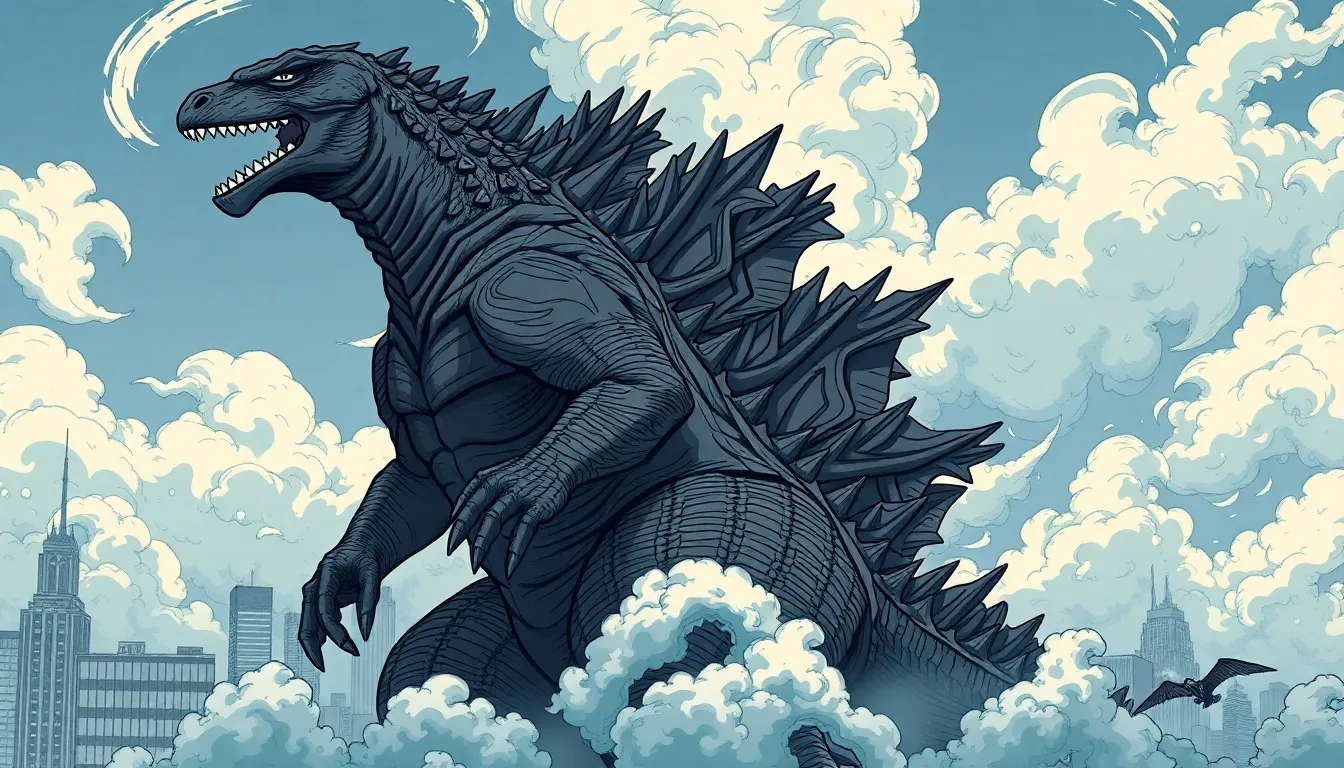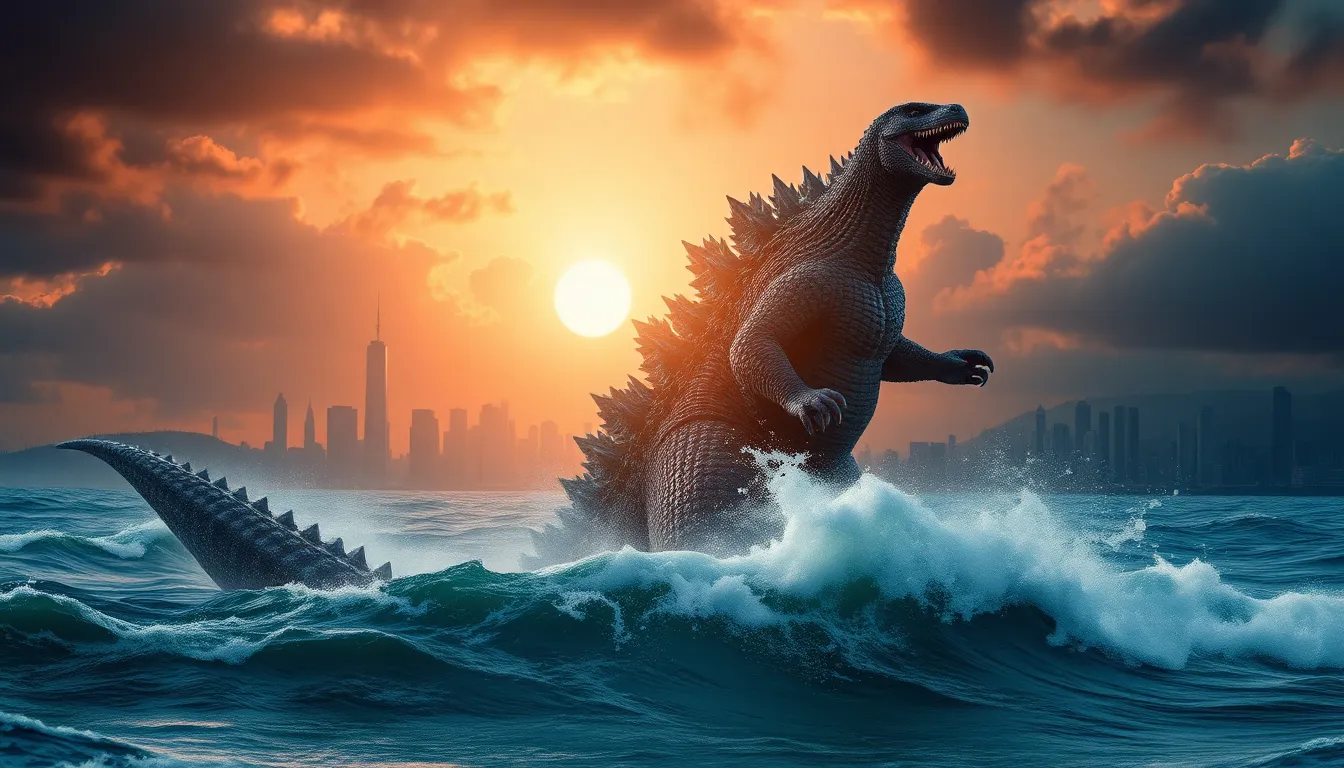Godzilla has stomped across screens for decades, captivating audiences with its immense size and destructive power. But amidst the chaos and epic battles, fans often wonder about the creature’s gender. Is Godzilla a boy or a girl? This seemingly simple question opens a Pandora’s box of interpretations, cultural significance, and even scientific insights.
The ambiguity surrounding Godzilla’s gender reflects broader themes in the franchise, including identity and evolution. As a symbol of nature’s fury, Godzilla transcends traditional gender roles, embodying both masculine and feminine traits. In exploring this topic, fans can gain a deeper understanding of what Godzilla represents in popular culture and how it challenges conventional ideas of gender.
Table of Contents
ToggleOverview of Godzilla’s Character
Godzilla, a giant monster originating from Japanese cinema, represents the chaotic power of nature and the consequences of human actions. The character first appeared in 1954, becoming an enduring symbol in film, literature, and pop culture. Godzilla embodies traits common to both genders, illustrating a duality that transcends traditional definitions.
Godzilla’s appearance varies across films, typically depicted as a massive reptilian creature with distinctive scales, spikes, and a powerful tail. Visual representation contributes to its persona, often evoking themes of destruction, resilience, and survival.
The character’s behavior includes both aggressive and protective instincts, aligning with traits often associated with masculinity and femininity. Godzilla’s role in movies oscillates between an antagonist and a protector, emphasizing its complexity.
Cultural interpretations of Godzilla reflect broader themes, such as the balance between humanity and nature. By challenging conventional gender norms, Godzilla invites discussions on identity and the roles of power and vulnerability. Fans and analysts alike explore these themes, providing insight into society’s evolving views on gender and character representation.
Godzilla’s evolution across decades shows adaptability to changing cultural landscapes. Each portrayal arises from historical contexts, bringing layers to its character, reinforcing its status as a significant cultural icon.
Gender Representation in Monsters

The exploration of gender representation in monsters, like Godzilla, offers insights into cultural perceptions and evolving identities. This reflection reveals the complexity of these figures and their meanings across different times and cultures.
Historical Context
Monsters in mythology and folklore often embody dual traits, reflecting societal norms. Ancient civilizations portrayed creatures with mixed characteristics as a way to symbolize natural forces, chaos, or moral dilemmas. Godzilla, emerging in post-war Japan, encapsulates historical anxieties stemming from nuclear weapons and environmental disasters. The ambiguity of Godzilla’s gender aligns with historical depictions of monsters that challenge rigid definitions of masculinity and femininity. Each iteration of Godzilla showcases shifting societal attitudes toward gender, highlighting its roles as an aggressor and a protector within various narratives.
Cultural Implications
Gender representation in monsters like Godzilla serves as a commentary on cultural norms and expectations. Godzilla’s androgyny allows for flexible interpretations that question traditional gender binaries. In diverse media portrayals, Godzilla’s destructive power juxtaposes nurturing aspects, embodying traits linked to both genders. This duality prompts the audience to reflect on their understanding of strength and vulnerability. The character’s ongoing evolution in popular culture signifies broader dialogues about gender inclusivity, environmental issues, and humanity’s relationship with nature. As a cultural icon, Godzilla not only entertains but also challenges perceptions, urging audiences to confront and reconsider the complexities of identity.
Analyzing Godzilla’s Portrayal
Godzilla’s portrayal encompasses various elements that contribute to its complex identity, particularly in terms of gender representation. Analyzing these elements reveals the multifaceted nature of this iconic creature.
Gender Ambiguity in Character Design
Godzilla’s design reflects gender ambiguity, combining characteristics traditionally associated with both genders. The creature’s massive, reptilian body evokes strength, often linked to masculinity, while its nurturing instincts in defending other beings resonate with femininity. This duality allows for diverse interpretations, suggesting that Godzilla embodies qualities that transcend fixed gender categories. The creature’s appearances vary across films, illustrating changes in presentation and further ambiguity in gender identity. This ambiguity engages audiences, prompting them to consider broader themes of identity and representation.
Voice and Movement
Godzilla’s vocalizations and movements contribute significantly to its perceived gender. The deep, booming roars align with traditionally masculine traits, expressing power and dominance. However, the nuanced movements can exhibit grace and adaptability, traits often associated with femininity. The combination of these elements creates an interpretation that challenges simplistic categorizations. Godzilla’s ability to shift roles from a menacing foe to a protective figure enhances its complexity and invites recognition of the fluidity of gender. These portrayals emphasize the coexistence of strength and sensitivity, reflecting evolving societal perspectives on gender roles.
Fan Interpretations and Theories
Fans engage intensely with Godzilla’s character, often debating its gender identity and interpretations across various media. These discussions reflect broader cultural dialogues surrounding gender and identity.
Community Discussions
Fans actively participate in online forums and social media platforms to share ideas about Godzilla’s gender. Some label Godzilla as male, citing its portrayal in early films where it battles other monsters. Others argue for gender neutrality, citing Godzilla’s complex character traits that embody both masculine and feminine qualities. Community interpretations often draw from recent adaptations and merchandise that depict Godzilla with features traditionally associated with different genders, creating a rich tapestry of opinions. These dialogues showcase the evolution of gender perception within fan communities and highlight the various emotions Godzilla evokes.
Gender Identities in Popular Culture
Godzilla’s representation serves as a lens for exploring gender identities in popular culture. The character’s design blurs traditional gender lines, allowing for diverse interpretations. Godzilla’s role within various storylines often shifts between protector and destroyer, exhibiting attributes tied to both masculinity and femininity. This fluid presentation resonates with ongoing discussions about gender inclusivity in media, as fans analyze how Godzilla’s identity reflects societal shifts. The discourse invites fans to contemplate broader themes of strength, vulnerability, and the spectrum of gender, ultimately reinforcing Godzilla’s status as a cultural icon that transcends fixed definitions.
Godzilla’s gender identity remains a captivating topic that sparks diverse interpretations and discussions. This iconic creature defies traditional gender roles and embodies a blend of masculine and feminine traits. Its androgynous nature encourages fans to explore broader themes of identity and cultural significance.
As Godzilla continues to evolve in popular culture, it challenges rigid definitions of gender and invites audiences to reflect on the complexities of strength and vulnerability. The ongoing dialogue surrounding Godzilla’s representation not only enriches its legacy but also underscores the importance of inclusivity in understanding character identity. Ultimately, Godzilla stands as a powerful symbol of nature’s fury and humanity’s relationship with the environment, transcending simplistic categorizations and inspiring future generations.




